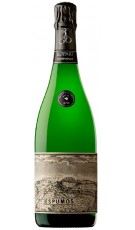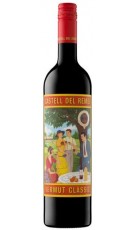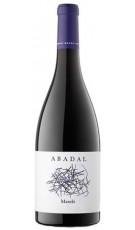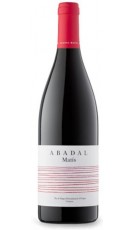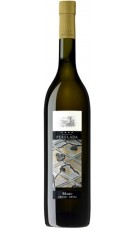
Cataluña There are 274 products.
La vid y el vino fueron introducidos por los griego en el área del Ampurdán. En época de los romanos se desarrolló el comercio de los vinos del Campo de Tarragona y de Alella, en los alrededores de Tarraco y Barcino. Durante el siglo XVIII se extendió la exporta...
Catalog
-
Llopart Original 1887
Sparkling wine.Corpinnat.Llopart Original was born with the desire to perpetuate the family winemaking customs and traditions of the 19th century. Made only with grapes from the oldest mountain vineyards, located at 380...
-
Vermut Clásico Castell del...
Vermouth.CÉRVOLESCosters del SegreThe selection of wines and botanicals evokes the holy herb, the gentian, the gypsy herb or port herb, the blessed thistle and species such as nutmeg and saffron, with a citrus finish of orange peel.
Online only -
Abadal Mandó 2021
Red wineROQUETA ORIGEND.O. Pla de BagesRed Wine Crianza, aging during 12 months
-
Abadal Matís 2020
Red wineROQUETA ORIGEND.O. Pla de BagesRed Wine Crianza, 10 months in oak barrels
-
Clos Martinet Magnum 2021
Red Wine.MAS MARTINETPrioratClos Martinet is the Priorat of the 80s. The wine of those who believed in the terroir and dedicated all their efforts to taking care of the process, the form... It is the wine of the generation...
-
Clos Martinet 2019
Red Wine.MAS MARTINETPrioratClos Martinet is the Priorat of the 80s. The wine of those who believed in the terroir and dedicated all their efforts to taking care of the process, the form... It is the wine of the generation...
-
Clos Martinet 2020
Red Wine.MAS MARTINETPrioratClos Martinet is the Priorat of the 80s. The wine of those who believed in the terroir and dedicated all their efforts to taking care of the process, the form... It is the wine of the generation...
-
Purgatori 2021
Red Wine CrianzaBODEGAS TORRESPrioratRed Wine Crianza, 16 months in french oak barrels
-
Pesseroles Brisat 2021
White Wine.MAS MARTINETPrioratPesseroles Brisat is an emotional journey to the recovery of brisados, white grape wines macerated with the skin. It is an artisanal wine, made by hand that is slowly fermented cold and macerated...
-
Els Escurçons 2021
Red Wine.MAS MARTINETPrioratMartinet Bru is the door to Priorat. It is a wine of our times, more accessible in every sense. The farms where it comes from are farms that receive the garbinada, a humid, sea breeze that stands...
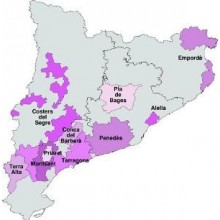
La vid y el vino fueron introducidos por los griego en el área del Ampurdán. En época de los romanos se desarrolló el comercio de los vinos del Campo de Tarragona y de Alella, en los alrededores de Tarraco y Barcino. Durante el siglo XVIII se extendió la exportación. De una parte se exportaba el vino del Ampurdán al Languedoc, y por otra parte se estimuló el cultivo de las comarcas litorales y prelitorales por la exportación a América como vino concentrado en aguardiente. Desde Villanueva y Geltrú se exportaba la producción del Penedés, desde Salou la producción del Baix Camp y del Priorato, y en menor medida desde los puertos de Rosas, Begur, Mataró, Barcelona y Tarragona. A partir del 1865, con la irrupción de la filoxera en Francia, todos los puertos orientaron la exportación al Languedoc y Provenza para atender la gran demanda francesa. Entre los años 1878 y 1900 la filoxera acabó destruyendo toda la viña de Cataluña. La replantación comportó un cambio, pasando la producción máxima del Bages al Penedès, y provocando el despoblamiento del Priorat. La replantación de cepas blancas favoreció el desarrollo del cava. Se crearon las primeras cooperativas vinícolas en Alella, Igualada y Artés, impulsadas por la Mancomunidad de Cataluña. Coincidiendo con el modernismo se construyeron grandes "cellers cooperatius" (bodegas cooperativas), denominados "catedrales del vino", en Barberà de la Conca, Espluga de Francolí, Falset, etc. En Raimat se produjo una experiencia inédita en Europa.

(+34) 91 129 11 11
(+34) 638 458 218
- Brandy
- Cognac
- Gin Premium
- Ron
- Whisky
- Denomination of Origin
- Winery



















